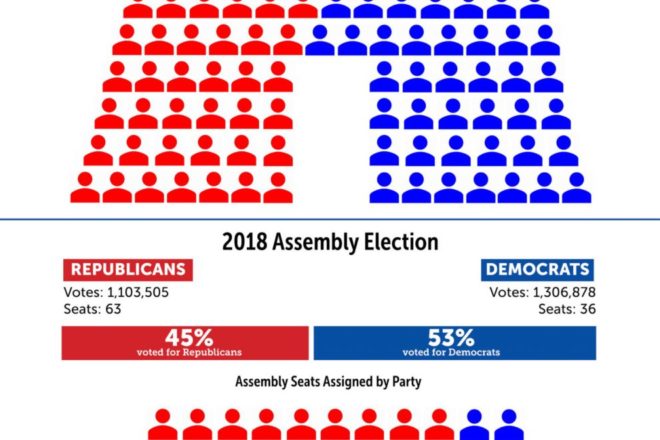Supreme Court Picks Evers’ Maps
- Share
- Tweet
- Pin
- Share

But Republicans expected to keep the upper hand
The Wisconsin Supreme Court has picked new election maps that were submitted by Gov. Tony Evers.
The split, 4-3 decision selected the maps of the Democratic governor, but analysis indicates the maps will let Republicans retain the upper hand in legislative races. Sixty of the 99 Assembly seats will lean Republican, and 22 of the 33 state Senate seats will lean Republican, according to a December analysis of the maps by the Milwaukee Journal Sentinel.
“The maps I submitted to the court that were selected are a vast improvement from the gerrymandered maps Wisconsin has had for the last decade and the even more gerrymandered Republican maps that I vetoed last year,” Evers said in a statement following the Wisconsin Supreme Court’s decision. “We still have a long way to go, and I will never stop fighting for nonpartisan redistricting as long as I’m the governor of this great state.”
Every 10 years, states are required to redraw the boundaries for congressional and legislative districts to account for population changes. This means the maps enacted into law in 2011 in Wisconsin could not constitutionally serve as the basis for future elections. The responsibility to adopt new district boundaries was not the Wisconsin Supreme Court’s, but that of the legislature and governor via the legislative process.
However, shortly after the completion of the 2020 decennial census, a group of voters petitioned the court to declare the 2011 maps unconstitutional and remedy the malapportionment. The court granted the petition and intervention.
The court accepted the “least change” framework adopted by the Republican-controlled Wisconsin Legislature in November 2021. The court reviewed six map proposals, including Evers’ map and the one adopted by the Wisconsin Legislature.
“In their Senate proposals,” the court wrote, “both Gov. Evers and the Legislature move a nearly identical 7.8% of voters to different districts (92.2% core retention), with a slight edge to the Legislature for moving 1,958 fewer people. However, in their Assembly map proposals, Gov. Evers moves 14.2% of voters to new districts, while the Legislature moves 15.8% (85.8% versus 84.2% core retention), a difference that affects 96,178 people. No other proposal comes close. And beyond core retention, no other measure of least change alters the picture. The governor’s proposed Senate and Assembly maps produce less overall change than other submissions.
“We also conclude,” the court continued, “that Gov. Evers’ proposals satisfy the requirements of the state and federal constitutions. Under the Wisconsin Constitution, all districts are contiguous, sufficiently equal in population, sufficiently compact, appropriately nested, and pay due respect to local boundaries. Gov. Evers’ proposed maps also comply with the federal Constitution’s population equality requirement.”

